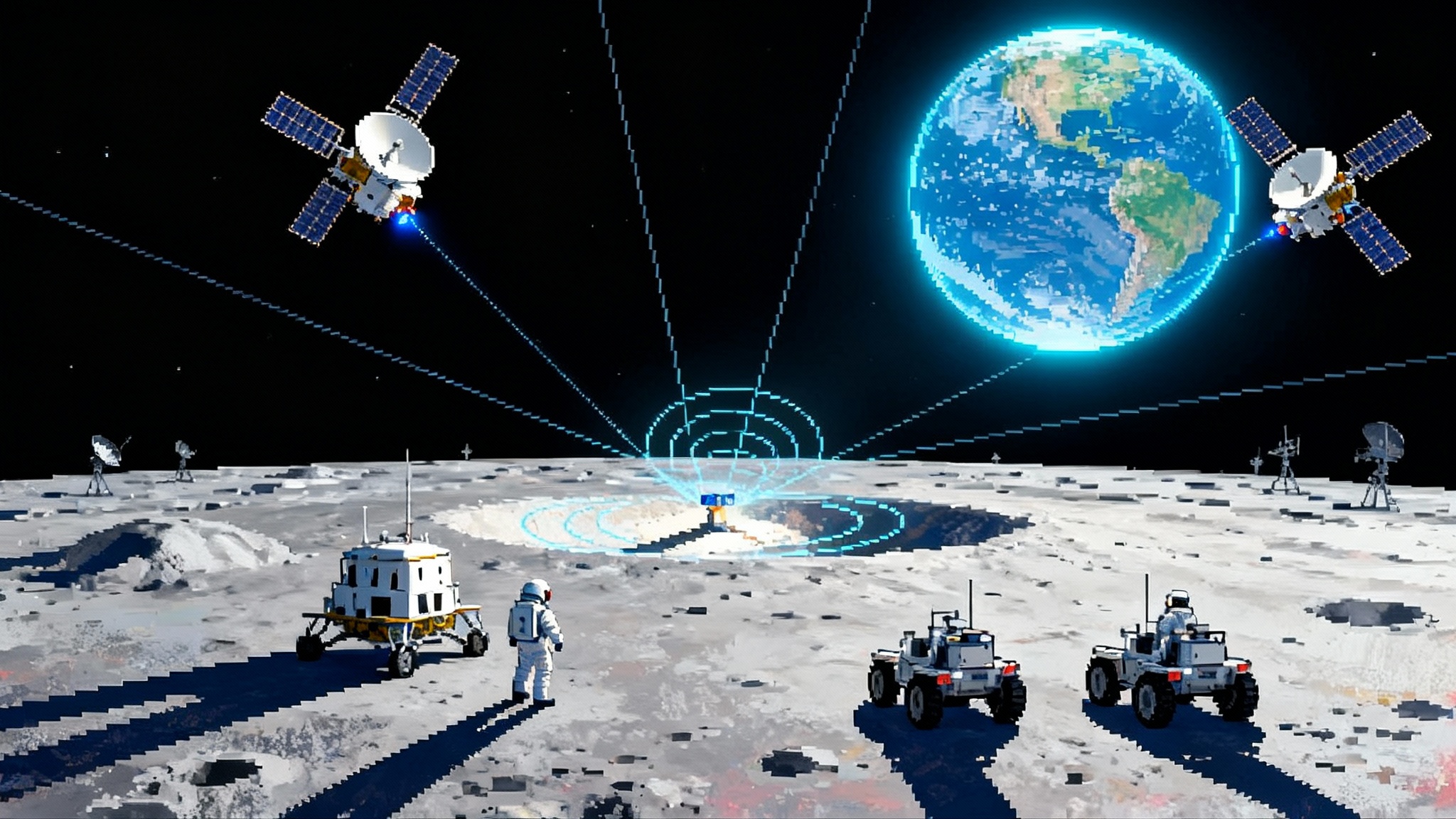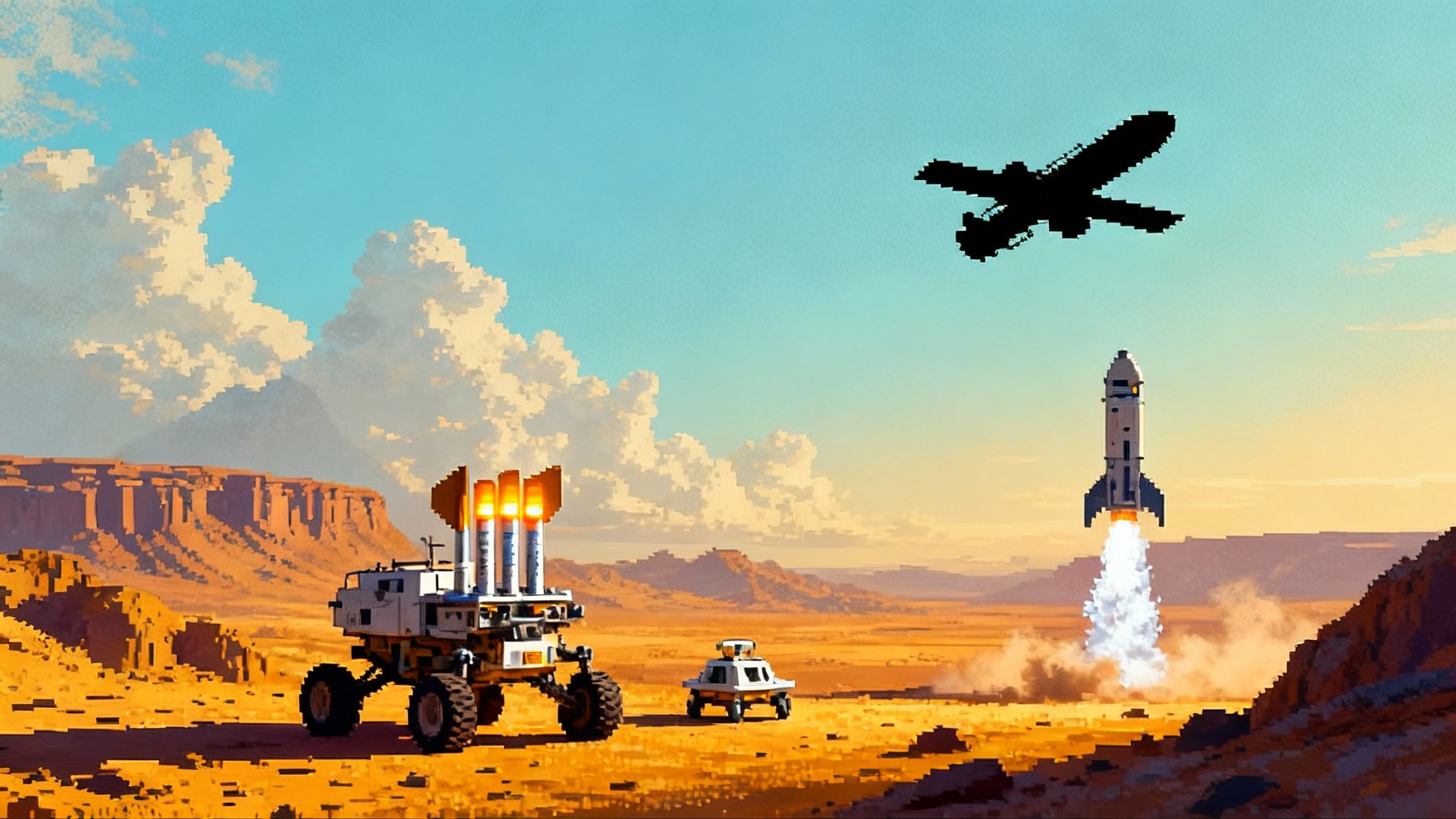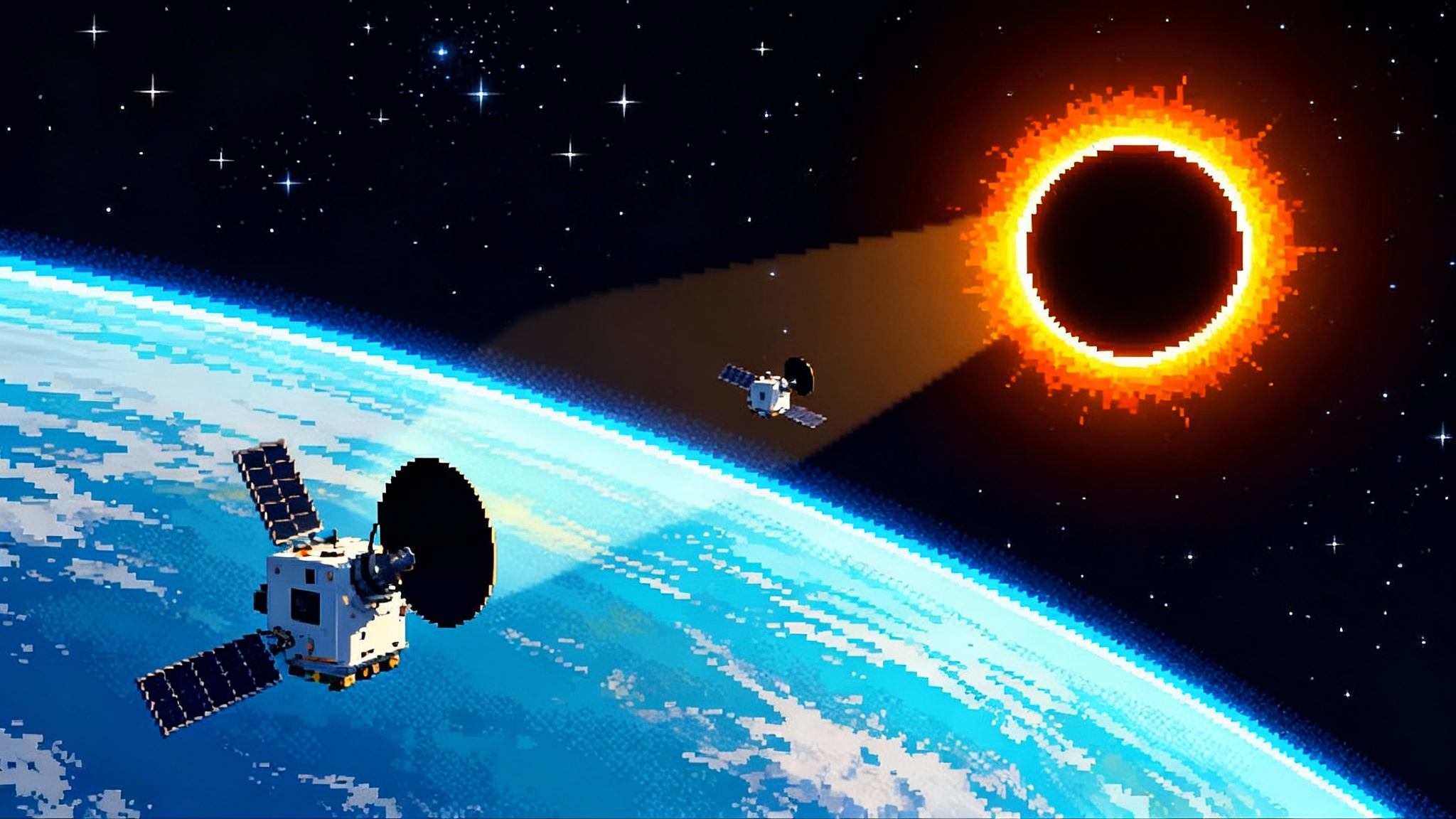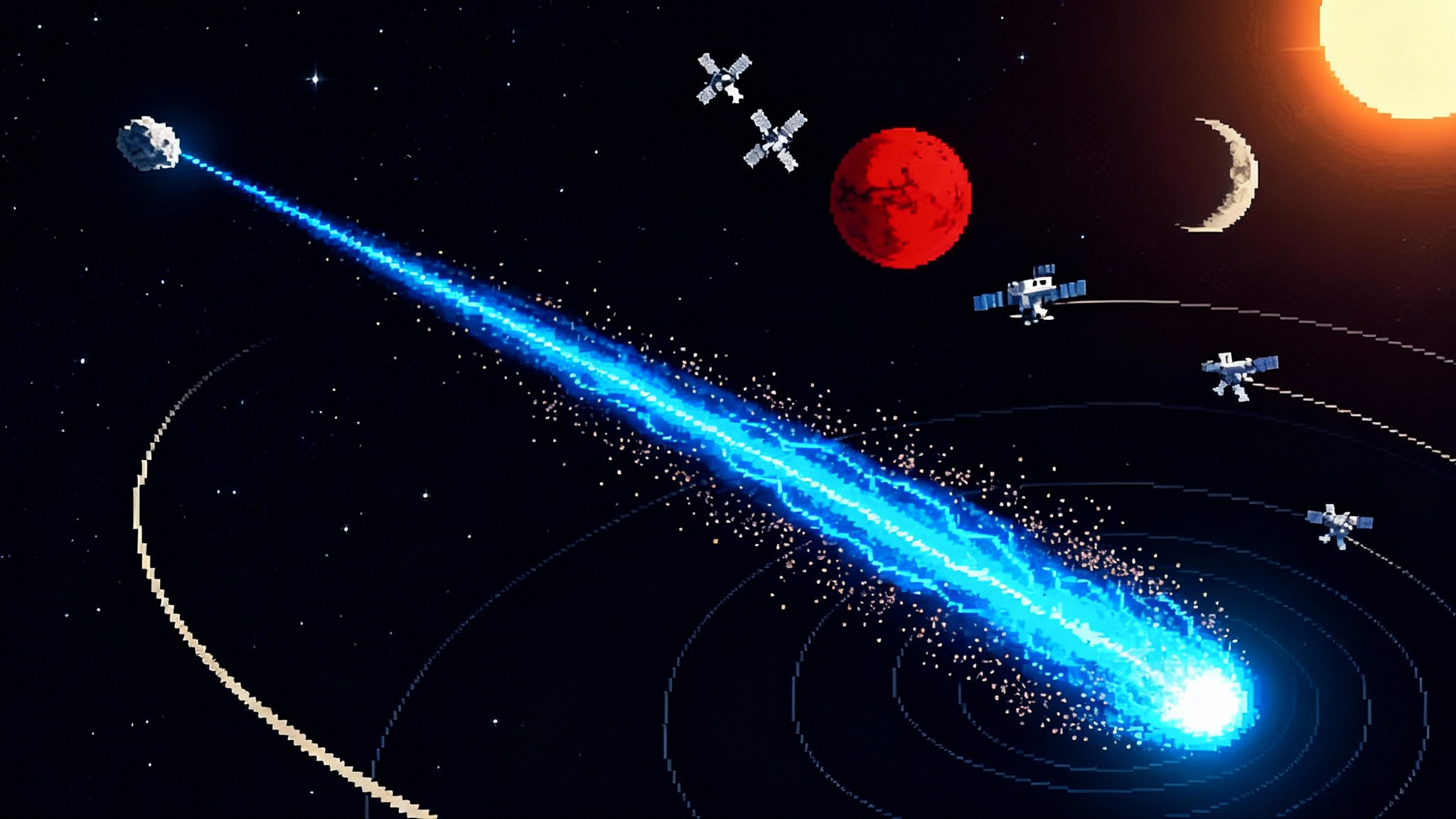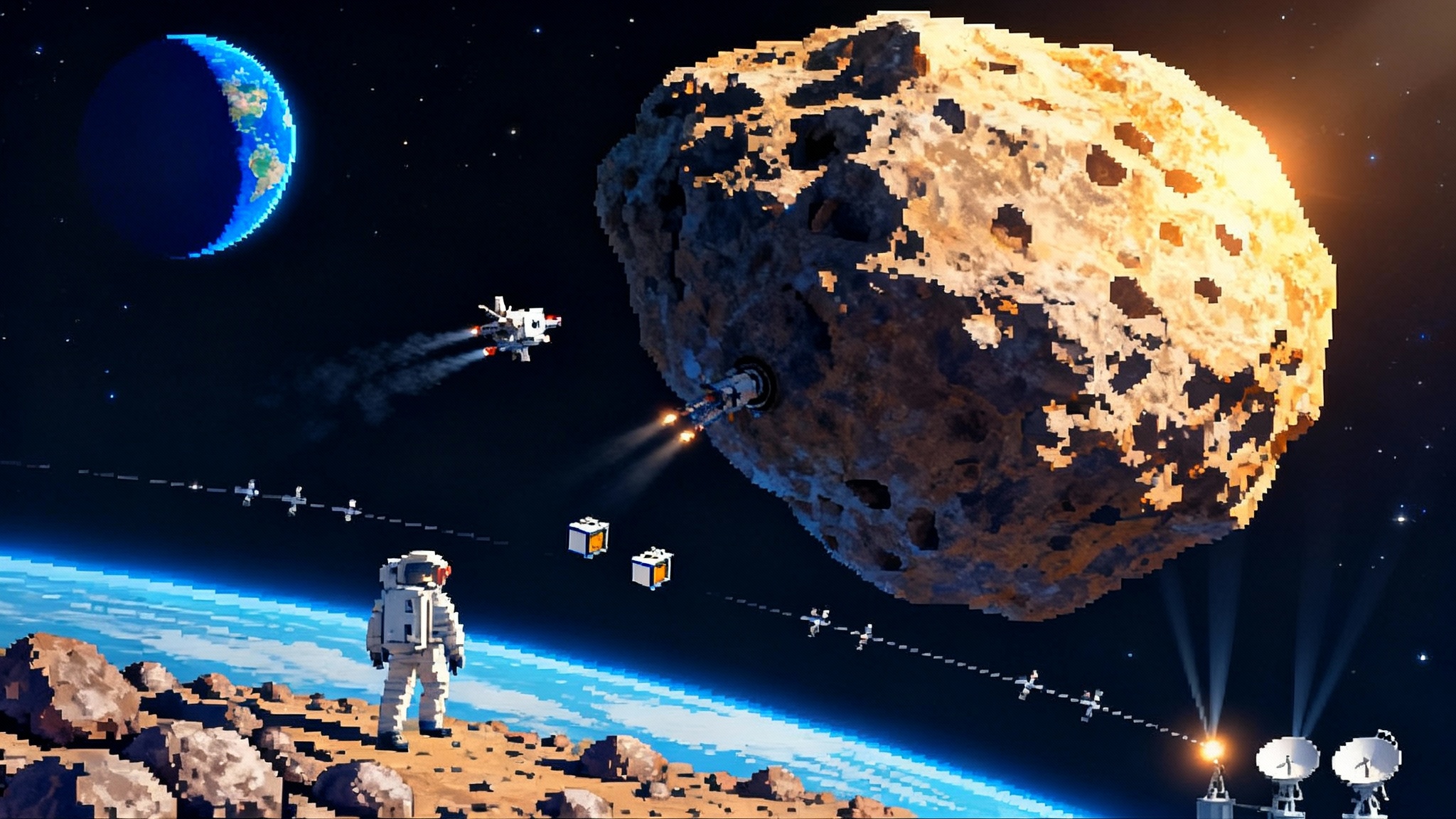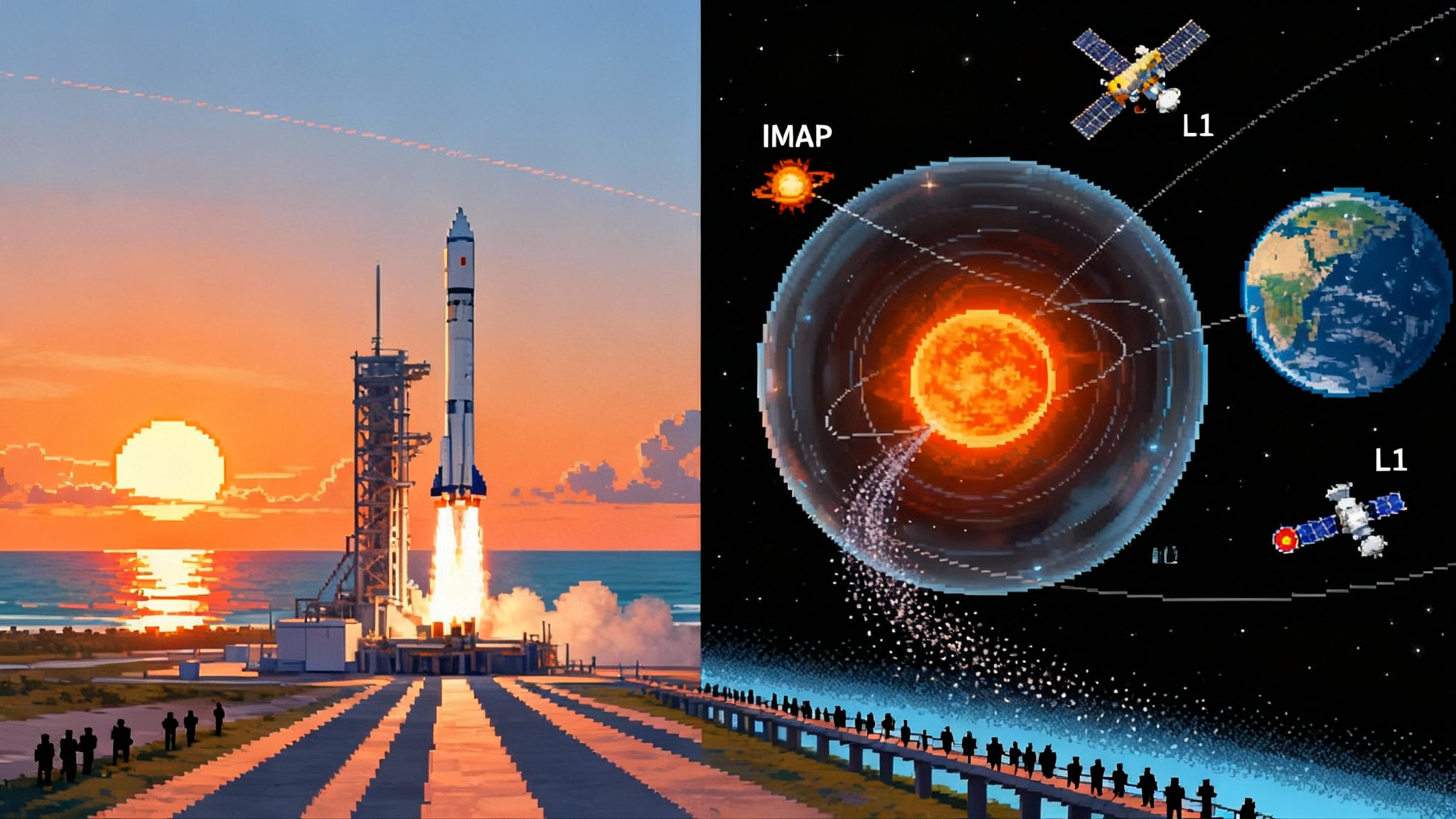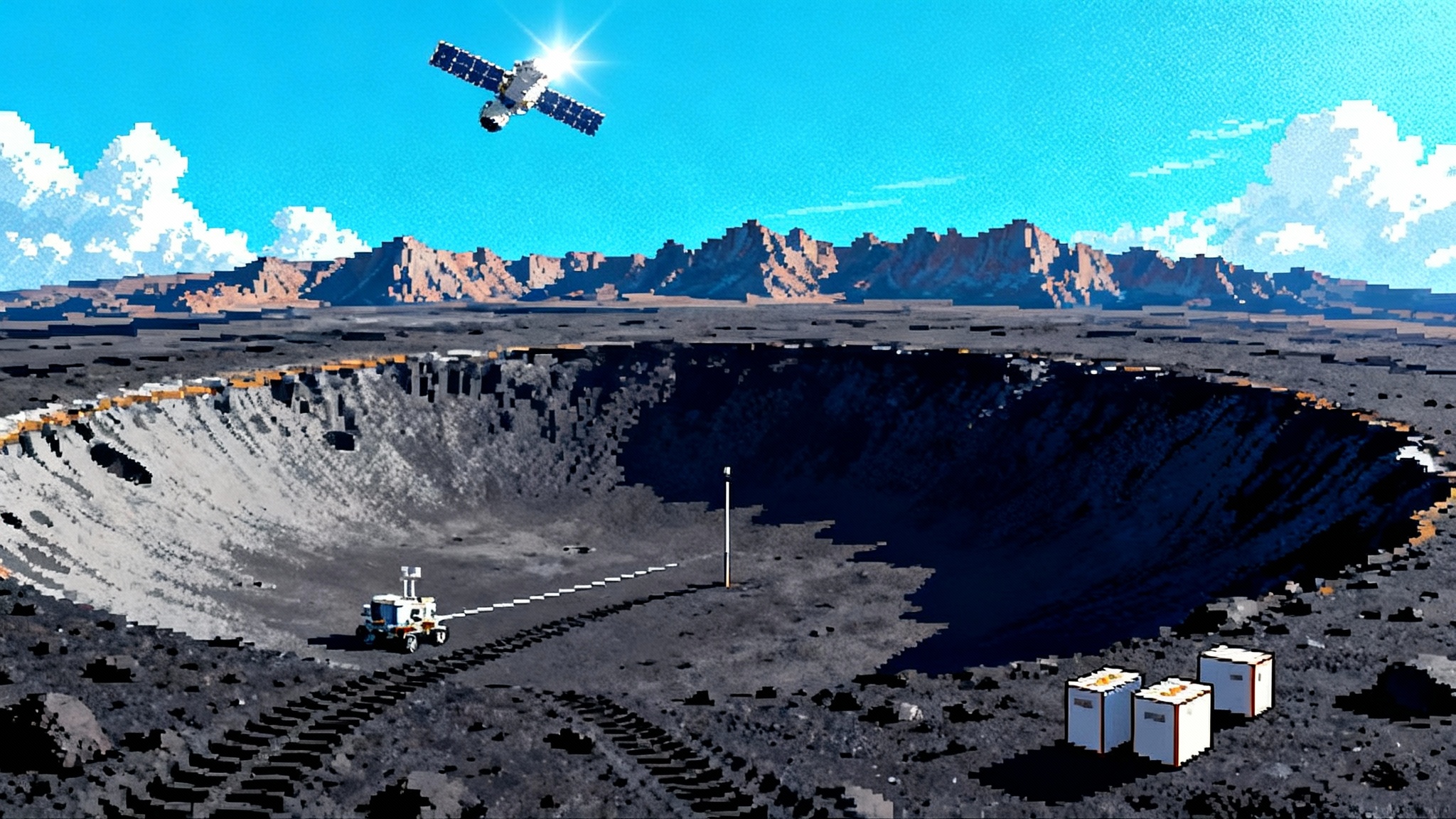 Space
Space
Articles under the Space category.
Moonlight and LunaNet Ignite the Moon’s Navigation Grid
ESA’s Moonlight and NASA’s LunaNet standards are converging into a shared lunar communications and navigation backbone. The result: precision landings, real-time EVA support, and scalable rover swarms shifting from bespoke to routine between 2026 and 2030.
New Glenn’s Mars Shot launches ESCAPADE and a new era
On November 12, 2025, Blue Origin’s New Glenn lifted NASA’s twin ESCAPADE probes and a new playbook for planetary science. Compact Mars orbiters paired with commercial heavy lift and L2 staging promise faster, cheaper missions that reduce risk for future crews.
Tianwen-2 Begins the Quasi-Moon Sample-Return Era
Launched in late May 2025, Tianwen-2 is racing toward Earth’s quasi-moon Kamoʻoalewa for a fast-turn sample return by late 2027, then pressing on to active asteroid 311P. Here is why this two-target, solar-electric mission could reset small-body science and planetary defense.
Gravitational Waves 2025: O4 Ends and Next-gen Ramps Up
As the LIGO, Virgo, and KAGRA network wraps its extended O4 run in mid November, a flood of detections is reshaping multimessenger astronomy. Here is what upgrades land before O5, what the 2030s megadetectors will add, and why discovery rates are set to jump again.
From Dots to Weathered Worlds: Webb’s 2025 Exoplanet Turn
In 2025 JWST delivered two breakthroughs: direct imaging of a Saturn-mass planet and the first 3D eclipse map of an alien atmosphere. Here is why that matters and what comes next.
Mars Sample Return, Rebooted: The 2025 Commercial Race
NASA’s 2025 reset opened fixed-price competition and Starship-class ideas, turning Mars Sample Return from one mega-plan into a sprint. What changed, who is bidding, how ESA’s orbiter anchors the mission, and why speed now matters.
Chang’e‑6 farside samples are steering the next lunar decade
Four landmark 2025 studies from Chang'e-6's first farside samples upend assumptions about lunar water, volcanism, magnetism, and mantle temperature, and they reset the next decade of landing sites, ISRU, and radio astronomy.
SPHEREx Goes Live: The 102-Color All-Sky Engine of Discovery
Fresh off first-light images, NASA’s SPHEREx has begun a 102-color, all-sky infrared survey that repeats every six months. Here is what that milestone unlocks next and how open data can speed discoveries for researchers and advanced amateurs alike.
Europe Turns On Eclipses: Proba-3’s Formation Telescope
ESA’s Proba-3 flies two small spacecraft as one precision instrument to manufacture hours-long solar eclipses on demand. The result is continuous, high-contrast views of the Sun’s inner corona and faster, sharper space‑weather nowcasts.
Euclid Q1 Turns the Dark Universe into an Open Map
On March 19, 2025, Euclid’s first public Q1 dataset arrived: 63 square degrees and roughly 26 million detections. Here is what is inside, why it already matters for weak lensing and lens hunting, and how to get started today.
Commercial Moon Landings Grow Up in 2025: Blue Ghost and IM-2
Two March 2025 touchdowns turned promise into process. Firefly’s Blue Ghost executed a clean surface sprint, while Intuitive Machines’ IM-2 reached the south polar highlands and revealed hard lessons in stability, power, and polar lighting.
3I/ATLAS Turns the Solar System into a Shared Observatory
As interstellar comet 3I/ATLAS sweeps through the inner Solar System, Mars orbiters, JUICE, Hera, Europa Clipper, and Earth telescopes are coordinating to read its ion tail like a lab experiment. Here is how a distributed observatory can decode an alien birthplace and why a rapid response interceptor should be next.
Apophis 2029: OSIRIS‑APEX endures as Europe’s Ramses rises
With NASA's OSIRIS-APEX funded and ESA's Ramses accelerating, Apophis's April 13, 2029 Earth flyby becomes a live planetary defense drill. Here is what will change, what to measure, and what must be funded on the ground and in space.
New Glenn targets Mars: ESCAPADE and the flexible window
On its second flight, New Glenn aims to send NASA’s twin ESCAPADE probes toward Sun-Earth L2 to wait for the right Mars alignment. If it works, launch day becomes a flexible starting point for cheaper, more resilient interplanetary missions.
IMAP lifts off to turn solar maximum into a live heliosphere map
Launched September 24, 2025, NASA’s IMAP is cruising to L1 to turn solar maximum into a live map of the heliosphere and deliver earlier, sharper space‑weather alerts for Artemis crews and satellites.
Rubin’s First Images Ignite a Real Time Sky This Decade
In June 2025, the Vera C. Rubin Observatory released its first LSST images, opening a survey that will issue millions of nightly alerts. Here is how that firehose will accelerate discoveries of near‑Earth asteroids, kilonovae, and supernovae.
Deep-Space Laser Links Arrive: DSOC’s 2025 Finale
NASA’s Psyche-borne DSOC wrapped in 2025 and showed that laser light can carry science across hundreds of millions of miles. Here is how optical links become the backbone of space data this decade and who turns them on first.
Chang’e‑6 Rocks Rewrite the Moon: Drier Depths, Magnetic Revival
Chang'e 6 returned the first farside samples from South Pole-Aitken and they upend expectations: the mantle source looks far drier than near-side equivalents, and tiny clasts record a magnetic field that pulsed back around 2.8 billion years ago. Here is what that means for water prospecting, Artemis site choices, and a buildable farside lab.
